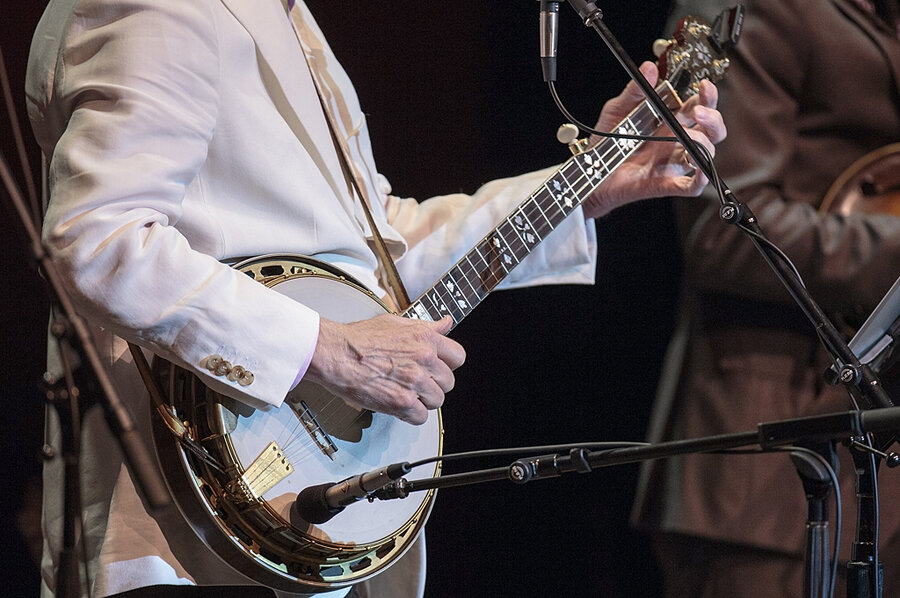Banjos back on center stage
Loading...
When founding members and banjo players Dom Flemons, Rhiannon Giddens, and Sule Greg Wilson formed the Carolina Chocolate Drops in 2005, their mission was to help revive African-American folk music traditions that lay at the core of modern pop and bluegrass music.
Over the next several years, however, those ambitions carried the Carolina Chocolate Drops somewhere unexpected: to international acclaim. The string band won a Grammy, opened for Bob Dylan, and in 2012 had a song on the soundtrack of the blockbuster film “The Hunger Games.”
And they are hardly the only banjo players to hit it big recently. In January, a quartet of scruffy banjo-playing folk rockers called Mumford & Sons plucked and strummed their way to two Grammy Awards – including Album of the Year. Then in April, comedian Steve Martin, long also known for his banjo skills, released an album of banjo tunes with Edie Brickell. Meanwhile, pop diva Taylor Swift was strumming her own banjo in front of sold-out stadium crowds on her Red Tour and at the Country Music Awards.
“People have a real hunger for music that sounds like it’s rooted in tradition, and the banjo definitely represents that,” Mr. Flemons of the Carolina Chocolate Drops says. “And then you have all these people diversifying the image of what the banjo is, showing that it’s not just an instrument for toothless hillbillies playing bluegrass.”
Indeed, the scrappy backwoods cousin of the acoustic guitar has a storied history as a pop instrument. Descended originally from similar round-bodied string instruments brought from West Africa by slave populations, the banjo first hit its stride in American pop music in the mid-19th century as the centerpiece of the country’s wildly popular (and wildly racist) minstrel shows. Banjos went on to become a centerpiece in American folk music, playing a starring role in the development of the Appalachian-rooted genre of bluegrass in the 1940s.
But if banjos have often captured the public’s imagination in the past, they’ve never become a mainstay like the guitar. That’s in part, Flemons says, because of their distinct and specific sound. It’s intriguing, but “people get sick of it after a while,” he says.
“There’s all this amazing cross-pollination of different musics going on right now, and someday I hope it will all click and you’ll get a new supermusic genre like rock ’n’ roll or reggae,” Flemons says. “When you get all these styles mixing, suddenly it can come together and then you get people tearing their hair out to get ahold of that music.”








